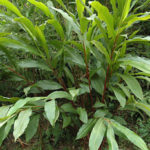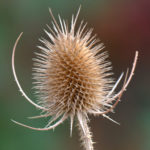Pleurisy Root
(Asclepias tuberosa)
Pleurisy root is a cousin of milkweed, native to North America. It is not used so often in today’s herbal community, but was a favorite medicinal plant to both Native Americans and early American electic physicians.
|
Family: Asclepidaceae Names: butterfly weed, orange milkweed Parts Used: root Energetics: sweet, slightly bitter, slightly salty/minerally, moistening Uses: Highly valued in treating pleurisy, pneumonia, and influenza to reduce inflammation and assist expectoration (1). As a diaphoretic, pleurisy root can be useful in breaking a fever. It also has a moistening effect to both the skin and the mucus membranes, lubricating dryness and loosening secretions that have become stuck or stagnant. Asclepias relieves sharp pain associated with pleurisy and acute bronchial trauma or infection (2). IHistorically pleurisy root was also used for consumption, diarrhea, dysentery, rheumatism, typhoid and eczema (3). Indications: sharp, cutting chest pain that comes on suddenly and persists for hours or days (2), pleurisy, pneumonia, acute fever. The American Eclectic physicians favored this medicine as a treatment for any disease where the skin is hot or dry, or in which the pores are weak and allow for passive sweating, with a flushed face, a full pulse, and pain that is worse with movement. Contemporary herbalist Matthew Wood recommends pleurisy root for a “cough that is dry in the upper lungs, wet in the lower lungs,” “pneumonia in the early stages, especially in children,” “coughs that are tight, dry and constricted,” and “sharp, stitching pains in the chest; pain in the chest from coughing” (4). Contraindications: can be emetic and purgative in high doses 1- David Hoffman Therapeutic Herbalism **This information is for educational purposes only and is not intended to diagnose or treat any disease** |



